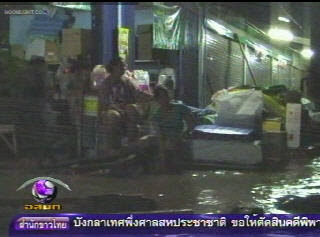
10/09/2009
(Post by Khmer Hot News)
Trade between Vietnam and Cambodia will increase sharply in 2010 and the former will overtake Thailand to become the latter’s key trading partner, according to economic analysts in Phnom Penh.
The analysts say although Vietnam-Cambodia trade has fallen sharply due to the global financial crunch, it is likely to hit US$2 billion when the Cambodian economy picks up next year.
The Vietnam Chamber of Commerce and Industry reports that bilateral trade in the first 8 months of this year fell by 29.2 percent to US$848 million. Of the total, Vietnamese exports to Cambodia were valued at US$726 million. Vietnam is Cambodia’s fourth biggest importer of farm products, rubber and wood.
Meanwhile, the Cambodian Development Council (CDC) says over the past 9 months Vietnam’s investment in Cambodia hit US$114 million, 20 percent above last year’s 12-month total. The Bank for Investment and Development of Vietnam (BIDV) and the Saigon Commercial Bank (Sacombank) have both opened branches in Cambodia.
In the review period, an additional 40 Vietnamese businesses registered to operate in that market, outnumbering all other countries. Last year, 52 Vietnamese businesses registered to operate in Cambodia, ranking third after China (82) and Malaysia (56).
The two countries have opened 9 border gates and built land routes to facilitate exchanges of goods.
(Post by Khmer Hot News)
Trade between Vietnam and Cambodia will increase sharply in 2010 and the former will overtake Thailand to become the latter’s key trading partner, according to economic analysts in Phnom Penh.
The analysts say although Vietnam-Cambodia trade has fallen sharply due to the global financial crunch, it is likely to hit US$2 billion when the Cambodian economy picks up next year.
The Vietnam Chamber of Commerce and Industry reports that bilateral trade in the first 8 months of this year fell by 29.2 percent to US$848 million. Of the total, Vietnamese exports to Cambodia were valued at US$726 million. Vietnam is Cambodia’s fourth biggest importer of farm products, rubber and wood.
Meanwhile, the Cambodian Development Council (CDC) says over the past 9 months Vietnam’s investment in Cambodia hit US$114 million, 20 percent above last year’s 12-month total. The Bank for Investment and Development of Vietnam (BIDV) and the Saigon Commercial Bank (Sacombank) have both opened branches in Cambodia.
In the review period, an additional 40 Vietnamese businesses registered to operate in that market, outnumbering all other countries. Last year, 52 Vietnamese businesses registered to operate in Cambodia, ranking third after China (82) and Malaysia (56).
The two countries have opened 9 border gates and built land routes to facilitate exchanges of goods.






























